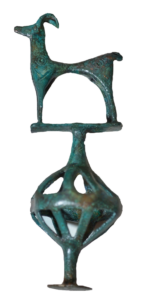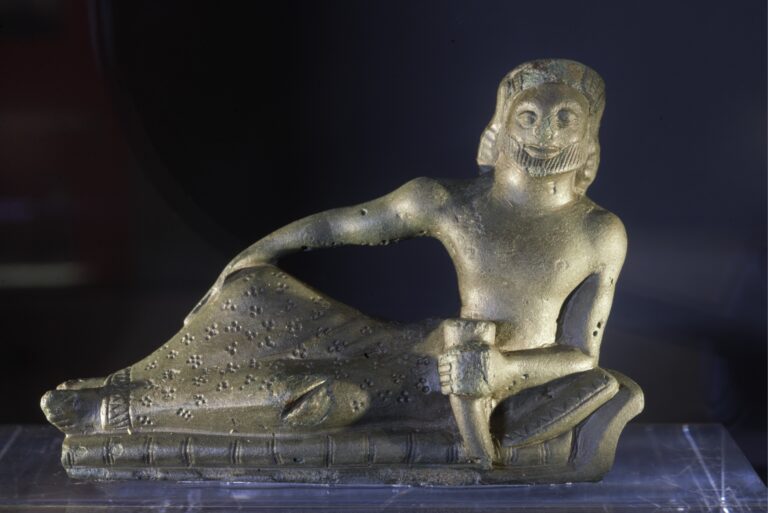Exhibits: Section 1
Section 1
Bronze Oinochoe
Bronze Oinochoe, with spherical body, short neck and trefoil mouth. It is not fully preserved. It is decorated with engraved stripes around the base of the vessel’s neck.
Oinochoe was a very common vessel throughout antiquity, used for the pouring of wine to the cups (its name derives from the Greek words wine-oinos and pour-cheo). Apart from its practical use, oinochoe was also used as grave good.
Τριφυλλόσχημη οινοχόη
Accordion content goes here!
Τριφυλλόσχημη Οινοχόη
Τριφυλλόσχημη Οινοχόη
Bracelet
Bronze bracelet with a triangular shaped cross-section decorated with engraved linear motifs. It was a grave good of a female burial. It is dated between the 9th and the 6th centuries BC and it was found in Ntailaki, Kastoria.
Bracelets in various forms and shapes were widely worn by women on the arm and the forearm, whereas along with the spiral shaped fibulae, long straight pins and coils (to bound their hair), where the diachronic female adornments.
Ψέλλιο (βραχιόλι)
Ψέλλιο (βραχιόλι)
Wild goat pendant
Bronze, animal-shaped pendant depicting a standing wild goat on top of a biconical-shaped object with an openwork body. It was found as a grave good in a female burial placed on her belly. It is dated between the 9th and the 6th centuries BC and it was found in Ntailaki, Kastoria.
The wild goat, a masterpiece of geometric art, has tall legs, thin neck and a rather long snout whereas its horns turn backwards and his short tail turns upwards. Its body is decorated with engraved motives.
Similar bronze pendants depicting animals but also humans have been found in various archaeological sites in Greece but also in Balkans and Anatolia. Their actual use and their role remain unknown to us so far, however the fact that they mainly originate from cemeteries and sanctuaries might be indicative of their probable use in ritual practices.
The banqueter
Bronze statuette of a bearded male figure lying on a recliner. He rests his right hand on a headrest, with which he holds a keras (drinking vessel) that contained wine. He is naked from the waist up, while on his lower body he wears an imation, decorated with engraved dotted flowers. It dates between the 6th and the 5th centuries BC. It was found in the Alevitsa peak in Dipotamia, at an altitude of 1585 meters and delivered to the Ephorate of Antiquities.
The figure of the “banqueter” was a beloved theme in ancient Greek art, and such depictions can be found in both the Greek vase paintings, as well as in both clay and bronze statuettes. However, this specidic stattuete was attached to a krater of a tripod, in other words on a big bronze vessel used for the dilution of wine with water.

